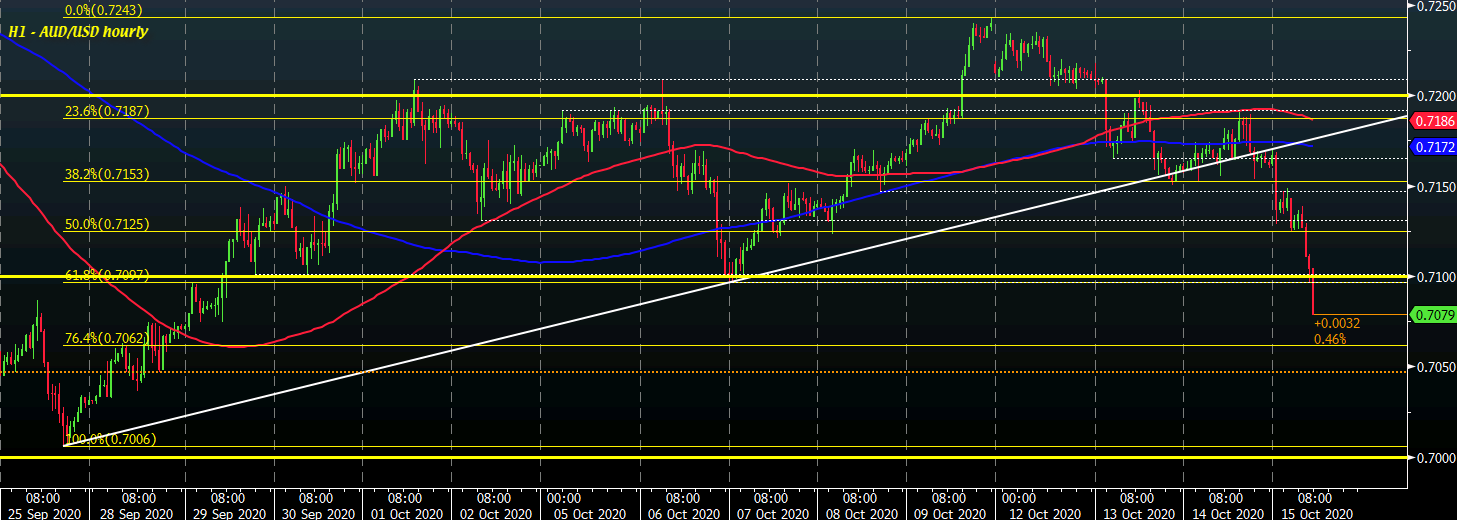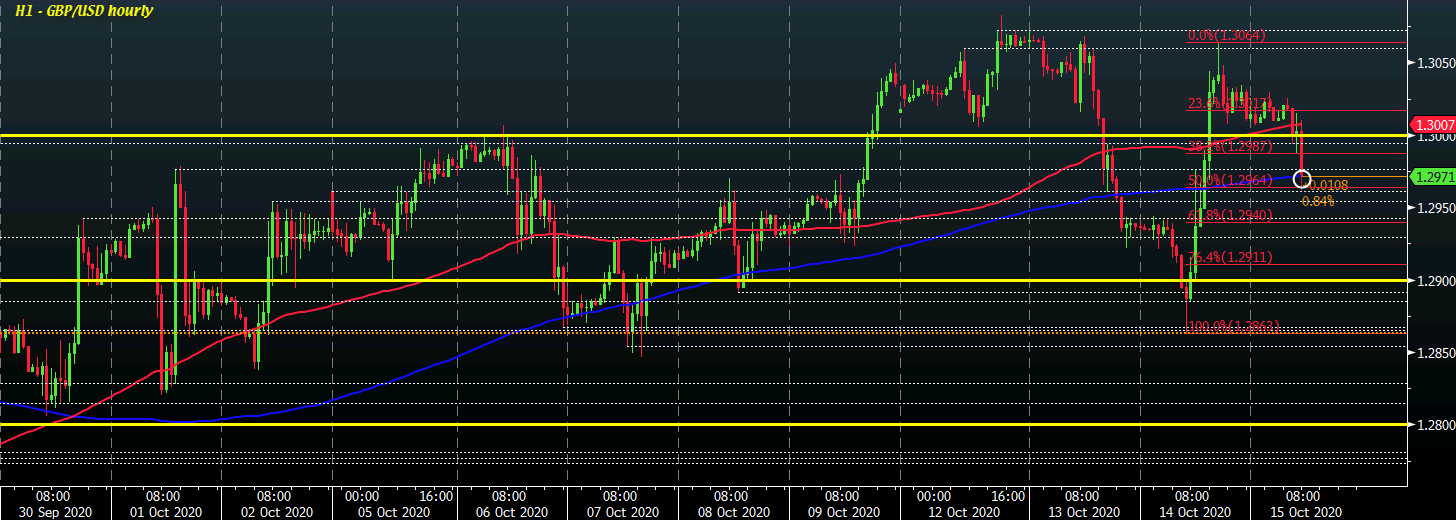Concerns about Covid slowdown hurt European shares
- German DAX, -2.5%
- France’s CAC, -2.1%
- UK’s FTSE 100, -1.8%
- Spain’s Ibex, -1.4%
- Italy’s FTSE MIB, -2.7%
AUD/USD is now down by over 1% on the day, falling to a low of 0.7077 as we see bids go into the dollar and yen amid the risk-off mood in the market.



On 12 October, India (Baa3 negative) unveiled its second round of fiscal stimulus, amounting
to INR467 billion ($6.4 billion), or about 0.2% of our real GDP forecast for fiscal 2020,
ending March 2021. Notwithstanding the fiscal prudence of the measures, the small scale of
the stimulus highlights limited budgetary firepower to support the economy during a very
sharp contraction, a credit negative.
The new stimulus, which includes cash payments to government employees and interestfree loans to states, aims to boost consumer spending during India’s festive season, and to
increase capital expenditure. The measures will involve additional direct official spending of
around INR410 billion, but will not require fresh funding given that the government lifted its
borrowing limit earlier in 2020 to allow for coronavirus-related expenditure.
Even when combined with the government’s fiscal stimulus earlier in 2020, the size of the
measures remains modest. In total, the two rounds of stimulus bring the government’s direct
spending on coronavirus-related fiscal support to around 1.2% of GDP. This compares with an
average of around 2.5% of GDP for Baa-rated peers as of mid-June. (more…)
